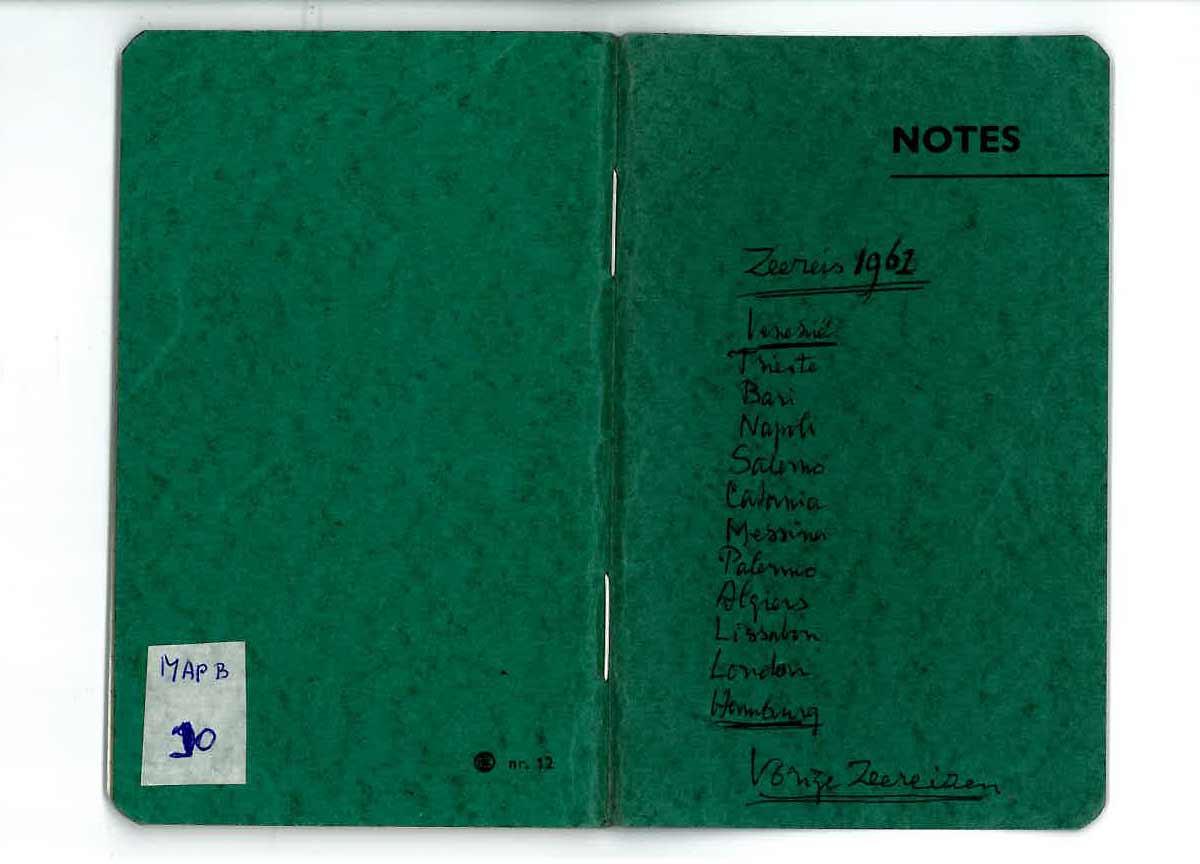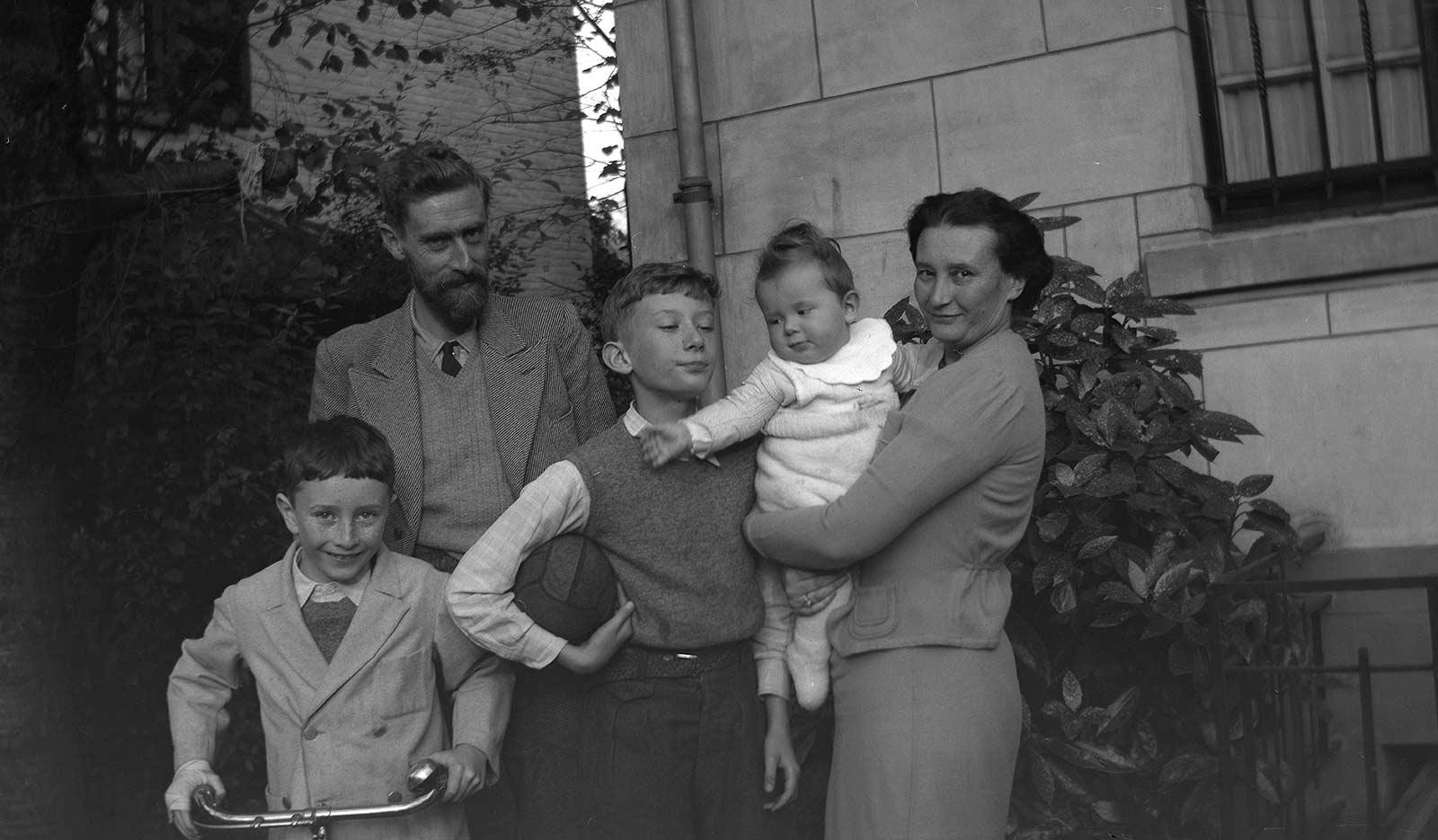

On 22 June 1931 writer Jan Walch and Escher, together with publisher Van Dishoeck, talked about publishing a story by Walch which had been illustrated with woodcuts by Escher. The story was set in Oudewater, a town known for its ‘Heksenwaag’ (witches’ weighhouse). It became famous during the 16th century because people accused of witchcraft were offered an honest chance of proving their innocence. In many cities and countries such trials were usually rigged, resulting in the burning or drowning of hundreds of innocent people. Many people accused of witchcraft from all over Europe rushed headlong to Oudewater to avoid being burned at the stake.
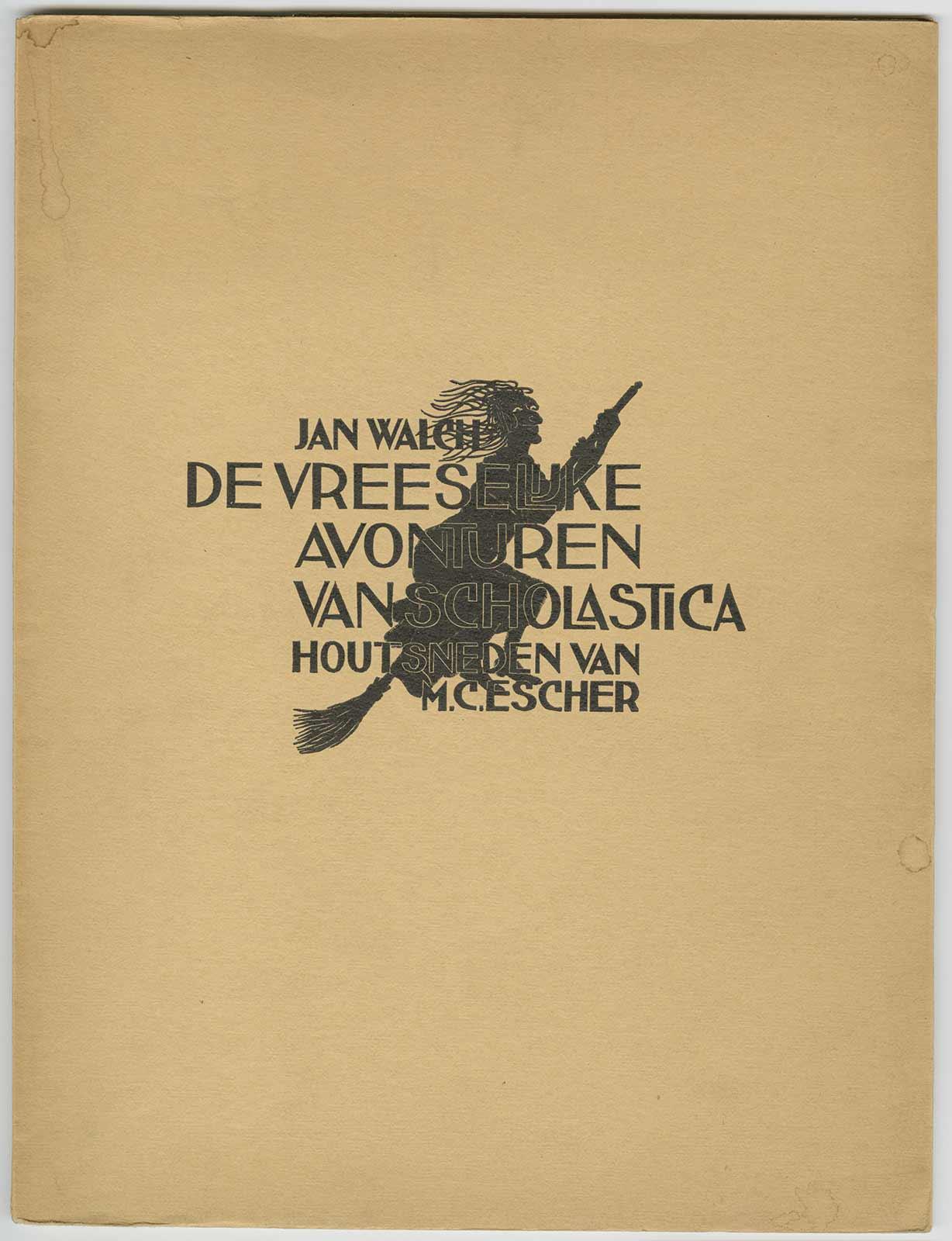
In the summer of 1931 Escher and Walch had visited the town together. The artist took photos and bought postcards that could help him with his subsequent illustrations. Three weeks later he sent Walch his first woodcut: a witch on a broomstick, floating above the sleepy town on a clear night. In total Escher would go on to create six large and 13 small woodcuts featuring characters from the story and a series of vignettes. The book was published by Van Dishoeck under the name De vreeselijke avonturen van Scholastica (The Terrible Adventures of Scholastica) in 1933. The collaboration was a success and these illustrations were commercially interesting, but Escher was much more inclined towards creating his own world.*
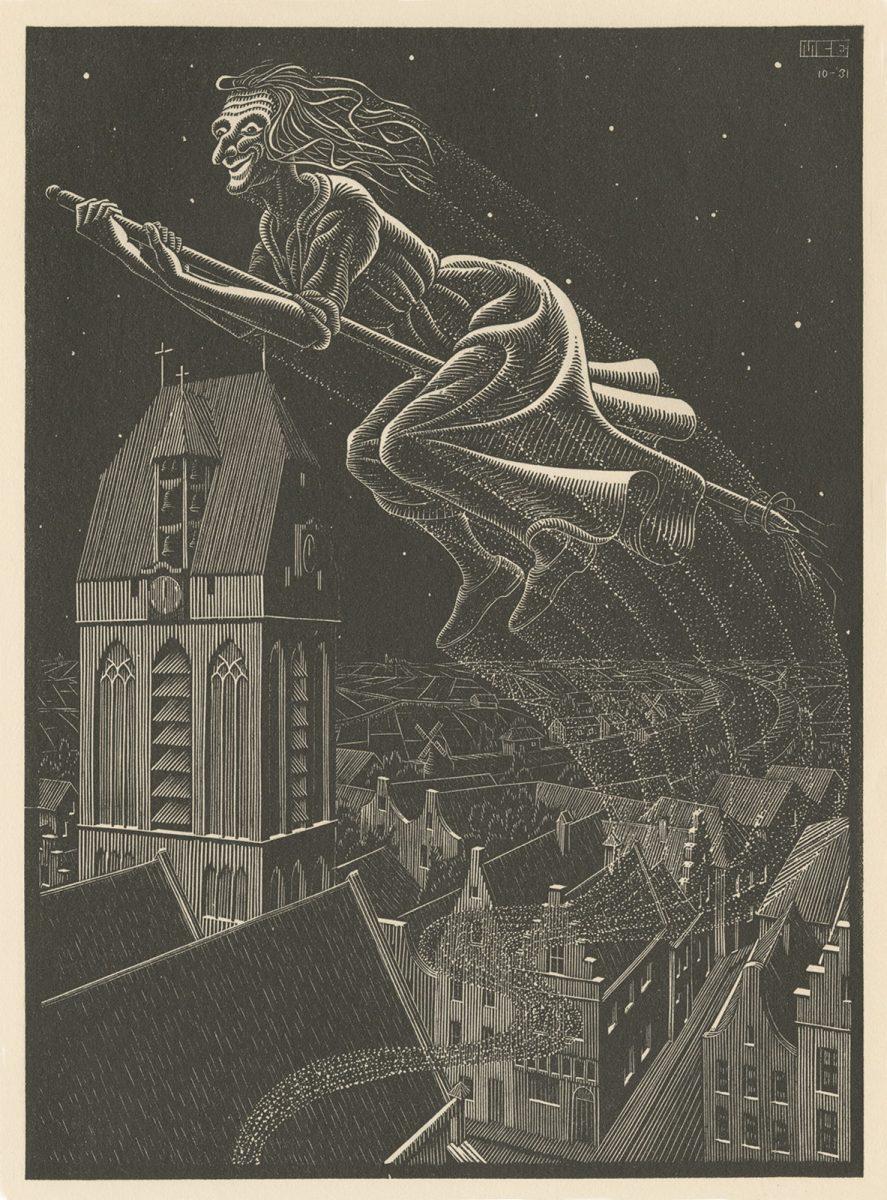
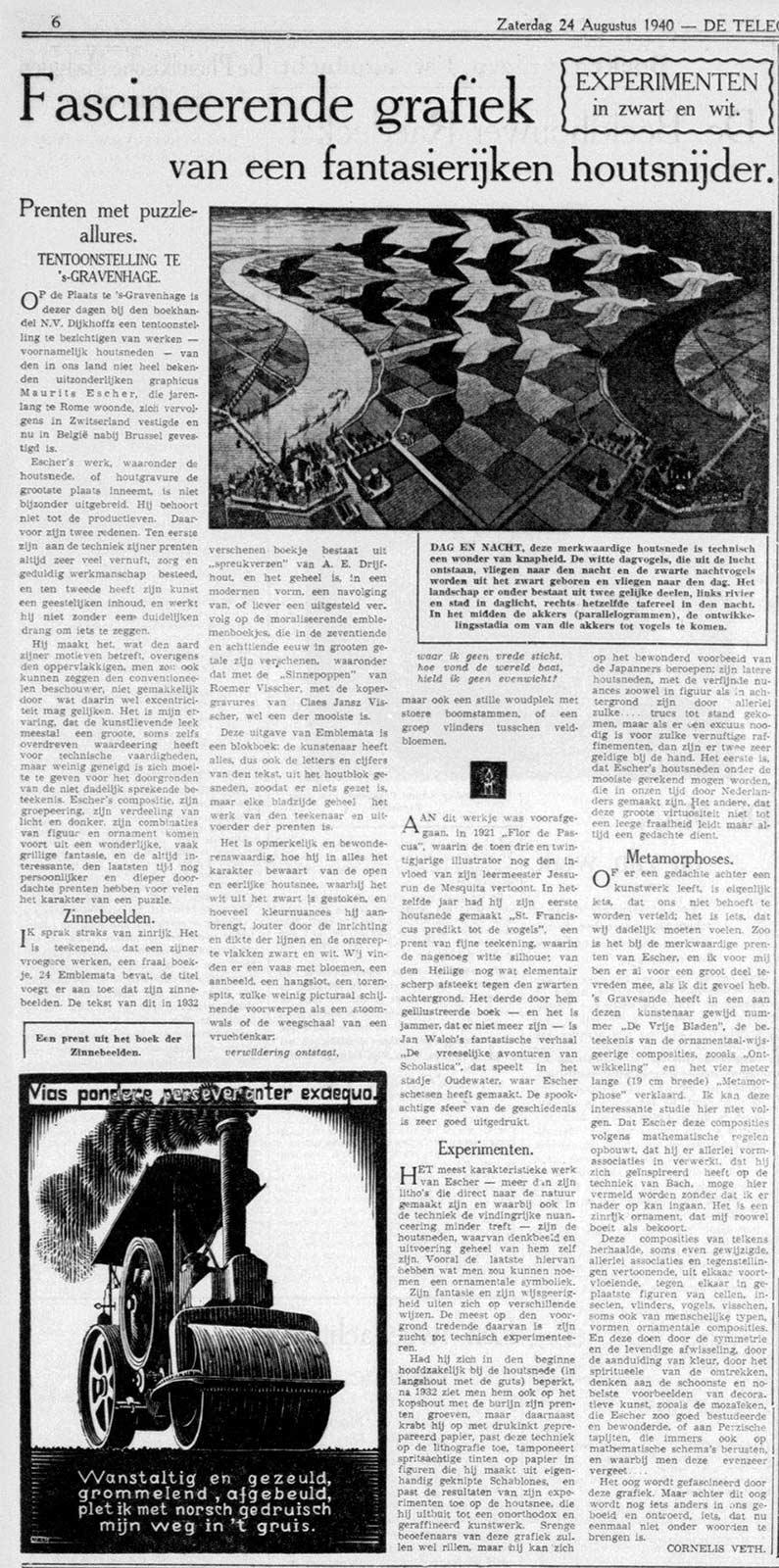
Scholastica would be the last book for which Escher would produce illustrations. What is more, he shunned any association with the profession of book illustrator. When the bibliophilic ‘Stichting De Roos’ (De Roos Foundation) asked him in 1956 to do illustrations for a story by Belcampo, Escher responded on principle. In a letter to the board he wrote that he was not an illustrator by nature:
'My work is not illustrative at all. Illustrating means adopting someone else’s ideas, whereas as time goes by I find myself wanting more and more to visualise my own, personal (hyper-personal even) thoughts.'
He explained that he considered illustration to be a pure waste of time, whilst seeing it as his duty to concentrate on the thoughts he expressed in his ‘imaginings’, a species of thought that were largely alien to his colleagues. Incidentally, Escher’s rejection of the project had nothing to do with Belcampo’s story itself.
'A masterful story, [...] the most visual one he ever wrote',
was Escher’s opinion. He proposed to make a book for De Roos with ‘word illustrations’ for his own prints. This book was published in 1958 and the text contains Escher’s ideas for six of his own tessellations.
Map is loading...
Bronvermelding
[*] Wim Hazeu, M.C. Escher, Een biografie, Meulenhoff, 1998, page 150
More Escher today

